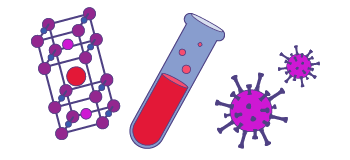Hydrostatic pressure has long proven to be an excellent tool to continuously tune structural, electronic and magnetic properties of matter. It offers an excellent possibility to modify magnetic exchange interactions without having to induce chemical changes to the investigated material.
This instrument is available by special request and dependent on availability of staff.
Hydrostatic pressure has long proven to be an excellent tool to continuously tune structural, electronic and magnetic properties of matter. It is a clean way to drive materials across their (quantum) phase transitions. Therefore, it offers an excellent possibility to modify magnetic exchange interactions without having to induce chemical changes to the investigated material.
The combination of EPR and high pressure technique is highly uncommon and continuously under development. High frequency EPR under hydrostatic pressure allows investigations on the origin of magnetic anisotropy in both monomeric species as well as exchange-coupled systems. We have recently succeeded in achieving this using EPR based on cavity perturbation technique. For the generation of pressure, we employ plastic diamond anvil cells (DACs) and pressures up to 35 kbar have been achieved so far. High frequency EPR at high pressures can be performed in the frequency range from 40 GHz up to 320 GHz at temperatures down to 2 K. We also have the possibility to perform angle-dependent HFEPR measurements at high pressures.
As an example for demonstrating the strength and capabilities of this technique, a study of molecule-based material is presented above. The magnetic coordination polymer [CuF2-(H2O)2(pyz)] (1, pyz=pyrazine) undergoes successive pressure-induced structural transitions, both of which are believed to involve dramatic reorientations of the Jahn–Teller (JT) axes associated with the Cu(II) ions [Angew. Chem. 122, 429 (2010); Angew. Chem. Int. Ed. 49, 419 (2010)]. Importantly, magnetic susceptibility studies reveal a pronounced change in the effective dimensionality of the extended Cu···Cu exchange interactions (from 2D to 1D) at the first of these transitions. High pressure EPR measurements provided direct information on the disposition of the magnetic dx2-y2 orbital upon entering the first of the two high-pressure phases. Two-axis angle-dependent high pressure EPR measurements on this compound using 9-5-1 vector magnet system allows complete mapping of the g-tensor before and after the first structural phase transition (shown in Figure). This provides an unambiguous evidence for the reorientation of the elongated Jahn-Teller axis at high pressures.

Explore our magnet schedule to see what exciting research is happening on our stellar fleet of instruments right now.
Prescimone, A., et al, Pressure-driven orbital reorientations and coordination sphere reconstructions in [CuF2(H2O)2(pyz)], Angew. Chem. Int. Ed., 51 (2012) Read online.
Last modified on 27 December 2022